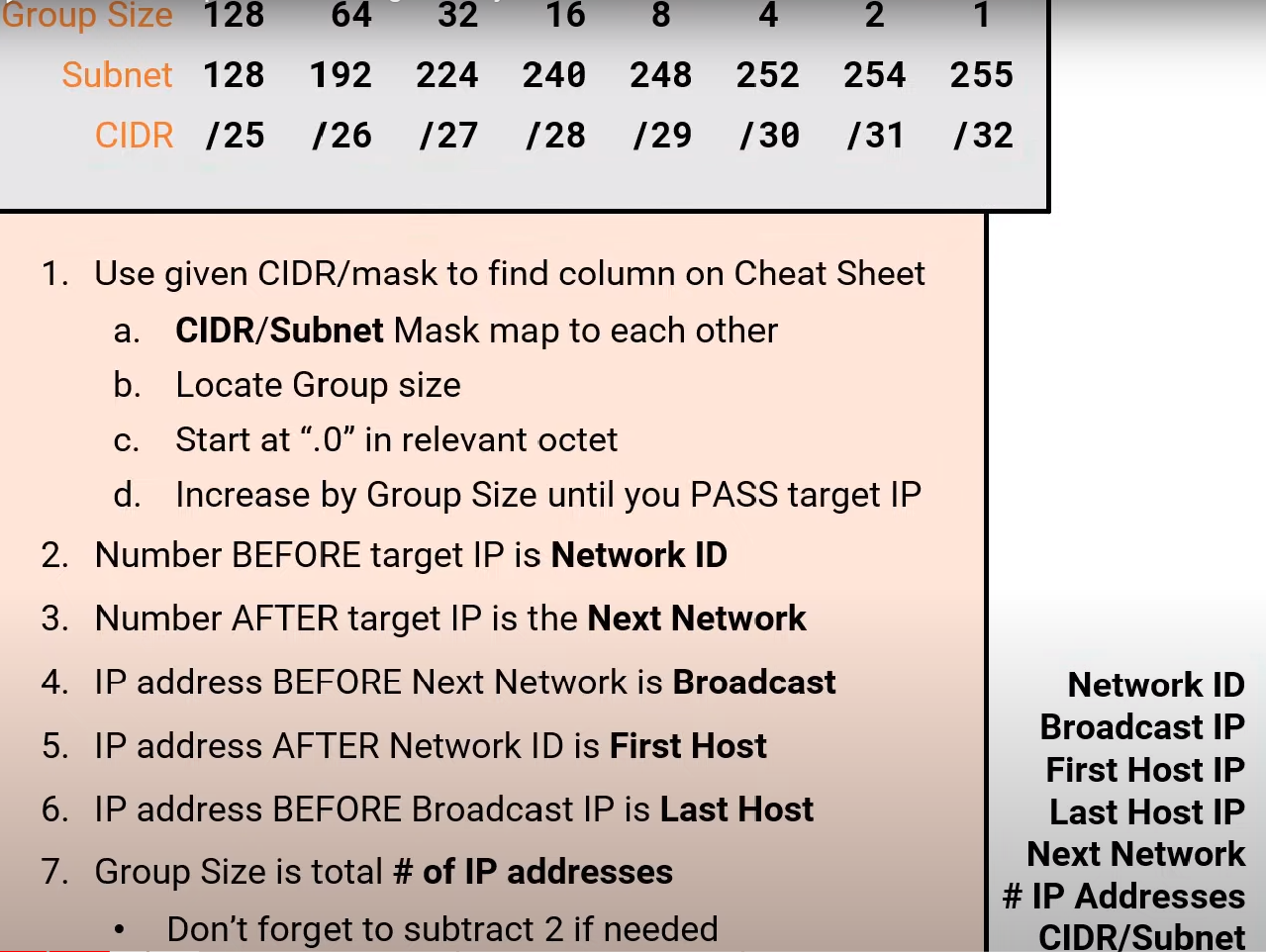
Use this link for review flash cards
Use this link to practice Subnetting IPv4
- Introduction to Subnetting
- Importance in Networking
- Basic Concepts
- Understanding Binary and Decimal Conversion
- Basics of Binary Numbers
- Converting Binary to Decimal in IP Addresses
- CIDR and Subnet Masks
- Definition and Purpose of CIDR
- Understanding Subnet Masks
- Subnetting Cheat Sheet
- What is a Subnetting Cheat Sheet?
- How to Use the Cheat Sheet
- Steps to Subnetting
- Determining Network Size
- Calculating Network ID
- Identifying Broadcast Address
- Finding Range of Host Addresses
- Accounting for Network and Broadcast Addresses
- Incrementing to the Next Subnet
- Practical Example
- Scenario Description
- Step-by-Step Breakdown
- Conclusion
- FAQs
Introduction to Subnetting
Subnetting is a fundamental concept in the realm of networking, allowing administrators to segment a large network into smaller, more efficient subnetworks. This technique is crucial for optimizing network performance, improving security, and preventing the wasteful allocation of IP addresses.
Understanding Binary and Decimal Conversion

At the core of IP addressing and subnetting is the binary number system. Each IP address is made up of four octets, with each bit in an octet representing a specific decimal value. Understanding how to convert binary numbers to their decimal equivalents is essential for any network professional.
CIDR and Subnet Masks

Classless Inter-Domain Routing (CIDR) presents a method for allocating IP addresses and routing more flexibly than the traditional classful methods. A subnet mask, integral to this concept, helps in determining how an IP address is divided into network and host parts.
Subnetting Cheat Sheet

A subnetting cheat sheet is an invaluable tool for network administrators. It provides quick reference information to determine the appropriate subnet mask and CIDR notation for a particular network requirement, including the number of available IP addresses.
Steps to Subnetting

Subnetting involves several steps, from determining the required size of the network to calculating the specific network and broadcast addresses. Each step is crucial in creating a subnet that matches specific requirements for IP address allocation and network segmentation.
Practical Example

Consider a network with an IP address of 192.168.1.0 and a subnet mask of 255.255.255.192, corresponding to a /26 CIDR notation. By understanding binary to decimal conversions and utilizing a subnetting cheat sheet, network administrators can efficiently create and manage this subnet.
Conclusion
Subnetting is an indispensable skill in network management, involving a deep understanding of binary to decimal conversions, CIDR, and subnet masks. Mastery of these concepts allows for efficient and effective network design and management.
FAQs
What is subnetting? Subnetting involves dividing a larger network into smaller, more manageable subnetworks to optimize performance and manage IP addresses efficiently.
Why is understanding binary to decimal conversion important in subnetting? Binary to decimal conversion is crucial as IP addresses and subnet masks are fundamentally binary in nature, and understanding these conversions is key to network configuration and analysis.
What is CIDR? Classless Inter-Domain Routing (CIDR) is a method for allocating IP addresses and routing that is more flexible than traditional classful methods, using a subnet mask to divide IP addresses into network and host parts.
How does a subnetting cheat sheet help? A subnetting cheat sheet helps network administrators quickly determine the appropriate subnet mask and CIDR notation for their network requirements, facilitating efficient IP address allocation and network segmentation.
What is a practical example of subnetting? A practical example of subnetting is dividing a network with an IP address of 192.168.1.0 and a subnet mask of 255.255.255.192 into smaller subnetworks, allowing for 62 usable IP addresses and efficient network management.